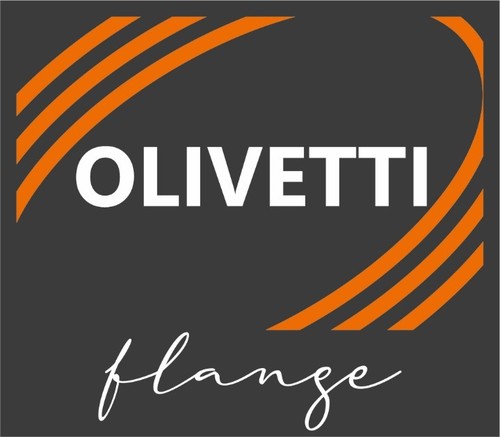
Garden machinery: a "social" approach
The development of social networks coupled with the increase in mobile browsing with smartphones is revolutionizing the way we communicate. This is all also to the advantage of retailers, who for the first time have the opportunity to communicate with their potential clients in a cost-effective and easily measurable way. Let's see what are the opportunities and how the Italian garden centres operate online.
The digital revolution has also changed the way we communicate with the end consumer, as well as having influenced his decision-making process at the time of purchase, giving him the opportunity to inquire online in advance in a very detailed way (often better than how the store employees might inform him) and buying from the e-shops at often lower prices than “brick & mortar” shops, as physical stores are now defined in the US, as opposed to e-commerce.
However, the advent of the Internet has brought great benefits to industries and particularly to specialist retailers, because now for the first time they have the opportunity to communicate and advertise to a vast number of potential consumers (or a small group, for example in the catchment area of the shop), at very low prices compared to the “old media” such as television, newspapers or billboards. Not only that: with social media marketing and the creation of communities through loyalty cards, a relationship can even be built with each customer, recording his preferences, his searches and his reactions to our emails, via Facebook, in the blogs within the company website or directly in the shops: so-called one to one marketing is now possible, and it is an important resource, especially for physical shops, which have the great advantage (perhaps the most important in recent years) of also having a personal contact with the customer. If all the available tools are well managed, this enables the development of predictive marketing strategies, i.e. aimed at anticipating the customer’s needs using what we know about him.
Not to mention the fact that the ability to “recognize” the customer who is entering the store and receiving (on tablets or smartphones) the list of his recent purchases is already a reality, just as you can receive an alert on your smartphone when the top 20 customers by sales volume for the previous year enter the shop: it gives the ability to welcome the customer who has not been back in the shop for 6 months with a “good morning Mr. Paul, everything okay with the battery mower you bought in April? With the same charger you could also use this blower that is on sale right now”.
Social media marketing for the point of sale
To understand why a specialized shop should use social media marketing, it is sufficient to analyse the statistical data. According to Audiweb/Nielsen data, there are about 42 million Italians connected to the internet (representing 87.4% of the total population), of whom about 28 million are active on a monthly basis, 52% of the Italian population aged two and over.
In the course of 2015 and 2016, most of them devoted much more time to internet browsing on the move, that is, with smartphones and tablets, compared to a normal desktop PC. According to the June 2016 Audiweb/Nielsen data, the daily time spent online by Italians (an average of 2 hours and 5 minutes) rose 3.4%, but compared to June 2015 the time spent on a mobile (73.3% of the total) increased by 10%, while PC connections fell by 11.2%.
This means that consumers who enter retail outlets are increasingly equipped with a device and are able to connect to the internet.
But during these two hours plus that Italians spend on the internet, what do they look for? If we analyse the most used services, we can say that Italians mainly use search engines, Google in the first place, (93.9% of users, nearly half of all Italians) and find information on the portals (91.3% of users). Social networks are in third place: 87% of internet users use them, equal to 44.8% of the total population.
Yet in reality, if we analyse the time spent on the internet, we find that Italians use the internet mainly on social networks. According to July 2016 Audiweb data, of the 50 hours and 22 minutes devoted to the internet by each user on average in July, as many as 15 hours and 14 minutes went to social networks (30% of the total time), followed by instant messaging (like Whatsapp or Messenger) with 10 hours and 12 minutes (20% of the total time), and online games with 7 hours and 53 minutes (15%). These three activities account for over 66% of the total time spent on the internet by Italians.
The fact that social networks are central in the world of communication is also evidenced by the industries’ advertising investments. Facebook, the most important social network with over one and a half billion users, had sales of 12.4 billion dollars in 2015, representing an increase of 58% compared to 2014. These sales are basically generated by the advertisments on Facebook. The world leader in digital advertising revenues is Google, which in 2015 developed a turnover of 60 billion dollars, an increase of 20% compared to 2014. Today the sum of the turnovers for Facebook and Google represents more than 50% of the world market for digital advertising.
These global trends are also applied in the Italian market. In the last 7 years, total advertising investments have recorded a substantial drop (from about 10 to less than 7 billion euros), while digital advertising grew over 10% in the last three years, from 1.74 billion in 2013 to 2.15 billion in 2015. But if we analyse the data in detail, we find that there are two tools that have grown the most: advertising on mobile (+53% in 2014 and +54% in 2015, compared to +4% and +1% of advertising on PC) and advertising on social networks, which is the real driving force of the digital advertising market, with a +70% in 2014 and +63% in 2015.
To be clear, the growth of about 210 million euros developed by digital adverting in 2015 (from 1.94 billion euros in 2014 to 2.15 billion in 2015) was developed by more than 50% by social networks (107 million), followed by videos (26% with 55 million), and search engines (15% with 31 million).
Italians love facebook
In Italy, when we talk about social networks we are basically talking about Facebook. First of all, for the greater penetration: 28 million active users, representing approximately 76% of the total social network traffic, compared to the 8 million of Instagram and GooglePlus. Meanwhile Twitter, despite being widely used in Europe and in the USA, cannot break through in Italy, even being threatened by Linkedin (a b2b social network).
But what makes Facebook so special in the Italian market are the average presence times: according to the Nielsen research on the Audiweb data for 2015, every month Italians spent an average of 12 hours and 20 minutes on Facebook. This is huge when compared with the two hours and a half on Instagram, two hours on Youtube, 60 minutes on Twitter, about 30 minutes on Pinterest or the dozens of minutes we devote to Linkedin and GooglePlus.
These are the two reasons why Facebook collects the vast majority of the digital advertising invested in Italy in the social network channel. Because Italians seem to appreciate this medium, both for the high number of subscribers and for the large amount of time that they dedicate to it, to read news or comments from friends, interspersed with advertisements.
The social networks phenomenon has not only grown with the number of users, but also as an advertising tool for companies; production to promote brand awareness and trade to lure customers into stores. In particular, Italian companies have realized that through paid advertising on social networks they can maximize the visibility of their content. And because advertising on social networks is highly measurable, in terms of clicks and engagement with the sponsored post, but most of all in terms of conversions, i.e. actual results, you can create campaigns on Facebook with a positive ROI (Return On Investment)). That is to say, users who see an advertisement for a garden centre click on the post, go into the website of the shop, and carry out an action: for example, buy a product, sign up for a course on apple tree pruning, confirm their attendance at the cooking show on the barbecue, or subscribe to the newsletter in order to be informed about promotions and discounts. All these tools are trackable, making it possible to measure in detail the advertising investment returns.
Gardening centres love social networks too
These trends are evident also in the gardening market, and in particular in the world of commerce. Since April 2014, I personally monitor the usage of social networks by 240 Italian garden centres, noting the performance on the 3 main social networks: in particular, the number of Likes on Facebook pages, the subscribers to Youtube channels, and the Twitter followers.
Even in the world of gardening centres Facebook is king: of the 240 companies analysed, 99.6% use Facebook (i.e. 239), 26.3% Twitter, and 24.2% Youtube. But in actual fact, the largest investments have been developed on leading social networks, where the Italian garden centres have gained 909,126 fans, against 20,982 Twitter followers and 5,114 Youtube subscribers.
Focusing just on Facebook, it is interesting to note that in a little more than two years, the number of fans has nearly quadrupled, from 240,000 in June 2014 to 909,000 in September 2016, with the record growth rate in 2015 of +80%.
The ranking of the gardening centres most active on Facebook in these two years has seen a lot of overtaking, and today three chains are at the top: Giardineria (with 4 stores www.giardineria.com), Viridea (with 9 shops www.viridea.it), and Peraga Garden Center (with 2 shops www.peraga.it). Two independents round out the top five places: Agricola of Varese has just completed a major remodelling of its point of sale and of the site (www.agricolashop.it) and AgriBrianza of Concorezzo in the province of Milan, one of the most important retailers for gardening machines in Italy (www.agribrianza.net).
By the way, it is interesting to note that in the approach of Italian garden centres to the new digital revolution, of the 240 companies analysed, 17% have an official e-shop: the percentage rises to 48% if we look at the top 25 of the Facebook rankings and 70% in the first 10.








